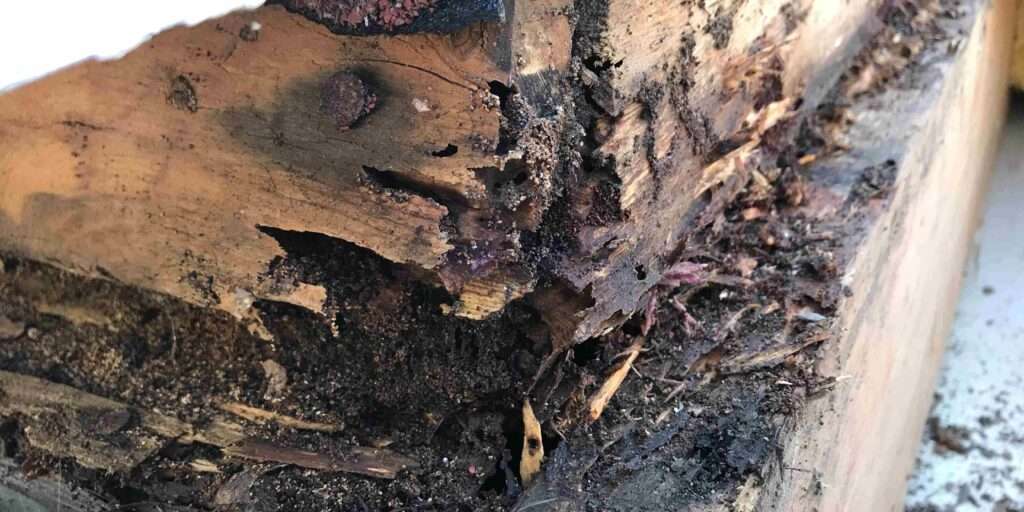
Wood rot in roof timbers
Wood rot is a fungal decay that occurs in timber when it’s exposed to moisture for extended periods. In the UK, where rainfall is abundant, roofs are particularly susceptible to this issue. Identifying common signs of wood rot and addressing its causes promptly can prevent extensive damage and costly repairs.
Understanding Wood Rot
Types of Wood Rot
Wood rot typically falls into two categories: wet rot and dry rot. Wet rot thrives in high moisture environments, while dry rot can spread even in relatively dry conditions. Both types can wreak havoc on timber structures if left unchecked.
Causes of Wood Rot
The primary cause of wood rot is prolonged exposure to moisture. In the UK, this can result from frequent rainfall, leaks in the roof, or poor ventilation in attic spaces. Additionally, untreated timber or inadequate drainage can exacerbate the problem.
Common Signs of Wood Rot on Roof Timber
Visual Inspection
One of the first signs of wood rot is visual deterioration of the timber. Look for discoloration, warping, or cracks in the wood, especially in areas prone to moisture accumulation.
Softened Wood
Gently press on the timber to check for softness or sponginess, indicating decay. Softened wood is a clear indicator of fungal infestation and requires immediate attention.
Musty Odor
A musty or earthy smell in the attic or roof space could signify the presence of mold or fungi, which thrive in damp conditions conducive to wood rot.
Presence of Fungi or Mold
Visible growth of fungi or mold on the timber is a telltale sign of wood rot. These organisms feed on the decaying wood and contribute to its deterioration.
Impact of Wood Rot on Roof Structure
Weakening of Timber
As wood rot progresses, it weakens the structural integrity of the timber, compromising the stability of the roof and posing safety risks.
Compromised Structural Integrity
Severe wood rot can lead to structural failure, potentially causing sections of the roof to collapse. This poses significant hazards to occupants and necessitates costly repairs.
Increased Risk of Collapses
Without intervention, wood rot can spread rapidly, increasing the risk of roof collapses and posing dangers to inhabitants and property alike.
Preventing Wood Rot
Regular Inspections
Frequent inspections of the roof and attic spaces can help detect early signs of wood rot. Addressing issues promptly can prevent widespread damage.
Proper Ventilation
Ensuring adequate ventilation in the attic helps regulate moisture levels, reducing the risk of wood rot. Proper airflow inhibits fungal growth and preserves the integrity of the timber.
Adequate Drainage
Maintaining effective drainage systems around the roof prevents water from pooling and seeping into the timber. Properly functioning gutters and downspouts are essential for diverting water away from the structure.
Treating Timber
Applying preservatives or sealants to timber surfaces provides an additional layer of protection against moisture and fungal decay. Regular treatments can prolong the lifespan of the wood and mitigate the risk of rot.
Repairing Wood Rot
Identifying Affected Areas
Thoroughly inspect the roof timber to identify areas affected by wood rot. Pay close attention to damp or discolored sections and probe the wood for softness.
Removing Affected Timber
Cut out and remove any sections of timber that show signs of decay. Ensure that surrounding areas are inspected for potential spread of rot.
Reinforcing or Replacing Timber
Replace the removed timber with treated or rot-resistant materials. Reinforce structural components as needed to restore the roof’s stability and strength.
Cost of Wood Rot Repair
Factors Affecting Cost
The cost of repairing wood rot can vary depending on the extent of damage, materials needed, and labor involved. Timely intervention is key to minimizing expenses associated with extensive repairs.
Importance of Timely Repairs
Addressing wood rot promptly can prevent further deterioration and costly structural damage. Ignoring the issue may lead to more extensive repairs or even the need for roof replacement.
Professional Help vs. DIY Approach
When to Seek Professional Assistance
For extensive wood rot or structural concerns, it’s advisable to enlist the expertise of professional contractors. They have the knowledge, tools, and experience to assess the situation accurately and perform effective repairs.
DIY Tips for Minor Wood Rot
Homeowners can tackle minor wood rot issues with DIY methods such as applying wood fillers, epoxy treatments, or sealants. However, it’s essential to assess the severity of the damage and seek professional guidance if unsure.
Conclusion
Wood rot on the timber of roofs in the UK poses significant risks to the structural integrity of buildings. By understanding the signs and causes of wood rot, implementing preventative measures, and addressing issues promptly, homeowners can safeguard their properties against extensive damage and costly repairs.
FAQs
- Q: How can I prevent wood rot on my roof timber?
- A: Regular inspections, proper ventilation, adequate drainage, and treating timber with preservatives are effective preventive measures.
- Q: Can I repair wood rot on my own?
- A: Minor wood rot issues can be addressed with DIY methods, but for extensive damage, it’s advisable to seek professional assistance.
- Q: What are the dangers of untreated wood rot?
- A: Untreated wood rot can weaken the structural integrity of the roof, leading to safety hazards and costly repairs.
- Q: How often should I inspect my roof for wood rot?
- A: It’s recommended to self inspect the roof and attic spaces at least twice a year, especially after heavy rainfall or storms.
- Q: Are there any long-term solutions to prevent wood rot?
